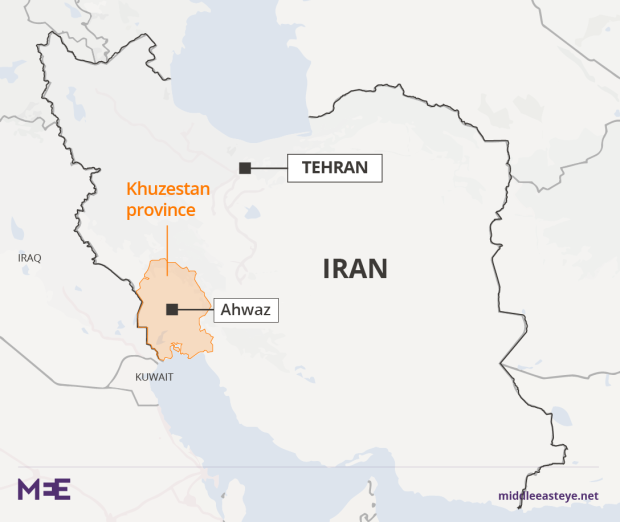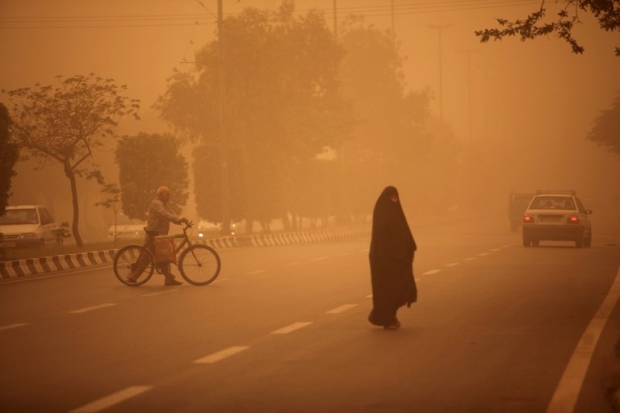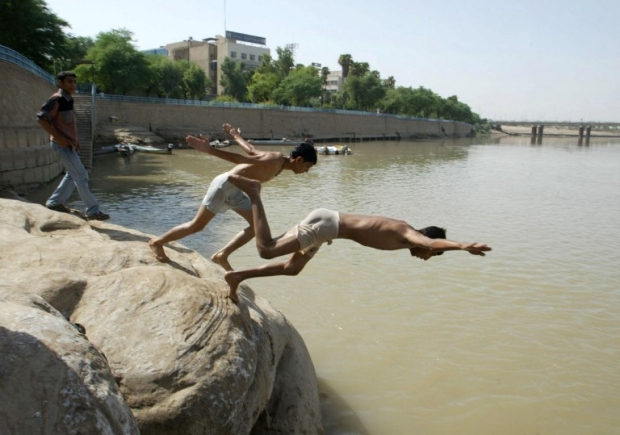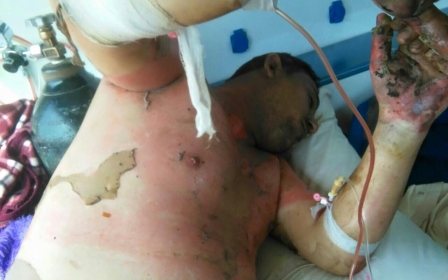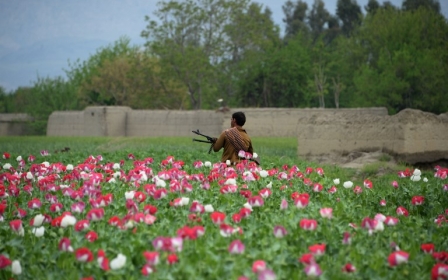The Iranian government is killing Ahwaz's environment

Many Ahwazis – Arab inhabitants who mostly live in southern Iran’s Khuzestan Province - believe that, over the course of nearly a century, the state intentionally neglected their lands, turning them into a desert and resulting in giant sand storms that have covered their skies and killed 2,000 locals from related illnesses in recent years.
The drinking water in Ahwaz city is so dirty and brown in colour, residents joke that they don’t drink water. They drink chocolate milkshake
It was in 1908 that oil was discovered in the area. In 1925, Reza Khan, the Shah of Iran, invaded what was then called the emirate of Ahwaz, overthrowing the Arab ruler of the region and annexed the 330,000 square-kilometre area in 1934. The lands were confiscated by the state from their original Arab owners and then transferred to the government.
Since then, the state has systematically abandoned the land and people of the area, leading the fertile land to become a small desert and a source of pollution in the region.
These days, the drinking water delivered to homes in Ahwaz city is so dirty and brown in colour and the cost of repairing dated water infrastructure beyond the financial capabilities of the province, residents joke that they don’t drink water. They drink chocolate milkshake.
For Ahwazis, this is just one aspect of what they feel is widespread racism. Despite the fact that they make up the majority of those living in the province, they are often unable to get jobs because employers discriminate against Ahwazi candidates.While the state builds first-class living facilities in the province for Persian newcomers, the poverty levels in Khuzestan remain among the highest in any province in Iran, despite the existence of oil, gas and other lucrative national resources.
So in the eyes of the Ahwazis, the discovery of oil and these other resources has been no less than a scourge and an affliction that has resulted in the occupation and environmental degradation of the lands they inherited from their ancestors.
Dusty, smoky skies
Today, the Ahwaz city is ranked as one of the most polluted cities in the world.
According to government reports, around 40 percent of gas which is extracted alongside oil in the province and could be used as an energy resource is actually burned off. This causes the emission of millions of tons of carbon dioxide gas in the air each year, further contributing to the air and environmental pollution already in Ahwaz as a result of the sand and dust in the air from desertification.
In a remarkable speech last year, Ahwaz’s interim Friday prayers leader, Ayatollah Ali Heydari, warned international oil companies of excessive oil exploration in the province pointing out that they could endanger the Hor-El-Howayzeh wetlands.
He also said that excessive activity could create unprecedented security challenges in the area by triggering Ahwazi anger and confrontations with the state. It could even attract the involvement of neighbouring countries who want to interfere to defend the Ahwazi.
Toxins dumped, fields burned
Oil extraction is not the only source of environmental damage in Ahwaz. The production of sugar cane in the region - which requires massive amounts of water and produces hazardous toxins when it is refined - has also harmed Alahwaz’s environment.
Not only are massive amounts of water from the Karoun River, the main source of drinking and irrigation water in the region, used in the process, but also the substances created in the refinery process are poured into the river. And the sugar cane companies set fire to the fields during harvest season, further threatening air quality and the ecosystem.
This industry, according to experts, is not economically viable for the government or the people of the region, but is purely designed to change the demographic balance of the region’s population, allowing the state to steal more Arab land.
The idea behind this policy goes back to the period of Mohammad Reza Shah, but it couldn’t be fully implemented at that time because of the internal instability and the eruption of the revolution. But eventually, it was implemented in 1988 by top-ranking politicians of the regime like Akbar Hashemi Rafsanjani, the former president.
"The sugar cane project has had devastating effects on air pollution in the towns of Ahwaz and Al-Falahiya (Shadegan in Farsi) and their surrounding villages," said Jawad Kazem Nasab, an Ahwaz city delegate in the Iranian parliament.
He added that, "the previous Iranian government had promised people of the region that it will take all measures and international standards to address these environmental risks and the collateral damage caused to the livelihood of the inhabitants of these areas”.
“However, as the delegate later confirmed, the sugar cane industry burnt its plants for economic purposes, which eventually caused even more air pollution in the region and left the lives of residents of the villages adjacent to these plantations under serious threat.”
Even the head of the environmental protection department in the province, Sayed Amid Hajti, reportedly said recently that "the oil and petrochemicals, sugar cane and other major industries in the region did not positively contribute to the lives of the people of the region, but instead increased the proportion of pollution in the air and environment”.
Dried up marshes
As a result of both the oil and sugar cane production in the region, the marshes of Hawr al-Howeyzeh and Hor al-Falahiya – which were used for fishing, wildlife conservation and helped reduce dust pollution - dried out over the past decade.
Once the marshes dried out, large sandstorms regularly occurred, disrupting the lives of people at their homes and at work and, according to some experts, causing a major increase in cases of lung infections and cancer.
Even Ahmed Reza Lahijganzadeh, the region's environment department chief, revealed that the proportion of air pollutants is 66 times above the hazardous threshold.
"Until 12 years ago, the phenomenon of sandstorm did not exist and it came after the drying of the marshes for the purpose of oil," said Kordawani, professor and director of the UN's Anti-Desertification Organization.
In an interview with Tasnim New Agency, Qasim Saadi, another Ahwazi Arab MP representing Al-Khafajiyeh (Susangerd in Persian) in the Iranian parliament, criticised government policies toward the Alahwaz region by saying they are deliberate and aimed against Ahwazi Arabs. He accused the energy and agricultural ministers of staying silent about the impact of the policies.
Letting the world know
In the absence of powerful laws to protect civilians in Iran and under an autocratic system, most ethnic groups in the country are exposed to systematic discrimination and persecution. The Iranian regime should respect its own people, take its international obligations seriously and avoid violating the rights of its own people.
Although the regime repressed the media and limited correspondents only to the capital or one or two Persian cities, social media and technology has allowed us to share what is happening and let the world know.
Ahwazi Arabs would like to know that the international community will take a stance and stop the Iranian regime from committing human rights abuses against them. Ignoring or neglecting people’s demands will only fuel their confrontation with the state and lead to dangerous escalation.
- Yasser Assadi is an Ahwazi human rights activist.
The views expressed in this article belong to the author and do not necessarily reflect the editorial policy of Middle East Eye.
Photo: Some of the Iranian parliament's law makers wear masks during a parliament session to show their solidarity with the residents of the city of Ahwaz that has been hit by sandstorms in recent days, on 15 February 2015 in Tehran (AFP)
This article is available in French on Middle East Eye French edition.
Middle East Eye propose une couverture et une analyse indépendantes et incomparables du Moyen-Orient, de l’Afrique du Nord et d’autres régions du monde. Pour en savoir plus sur la reprise de ce contenu et les frais qui s’appliquent, veuillez remplir ce formulaire [en anglais]. Pour en savoir plus sur MEE, cliquez ici [en anglais].



